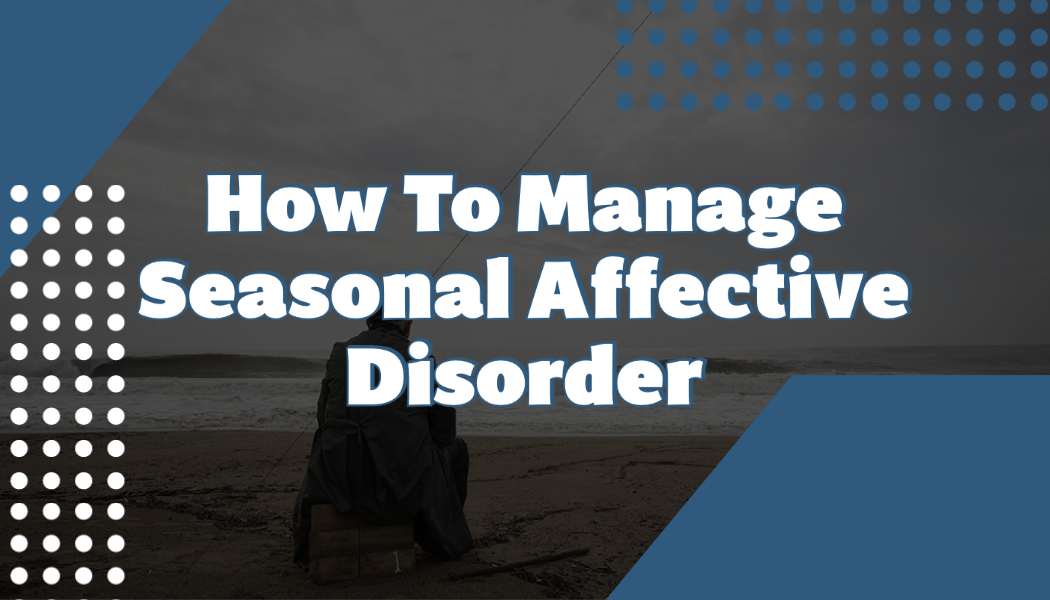Winter is coming, and with it comes waning sunlight and colder weather. These conditions can trigger the onset of depressive symptoms for individuals who struggle with major depressive disorders and winter depression; also known as seasonal affective disorder (SAD).
It is estimated nearly 10 million Americans are affected by seasonal depression as we step into the short winter days with shuttered windows aways from the long summer days of sunlight and fun. Experts still do not have a direct causation for this affliction, however it is believed to be connected to the lack of natural light and sunlight throughout the day.
In this article, we will dive into what seasonal affective disorder is, provide expert recommendations on how to get through the short and dark days of winter, and how to manage seasonal depression through mental health treatment.
What is Seasonal Affective Disorder?
Seasonal Affective Disorder is defined by recurrent episodes of depressive symptoms that coincide with the seasons. This is why SAD is also known as depressive disorder with a seasonal pattern.
Generally, winter is often the season most commonly associated with SAD, however, while it is rare, it is possible to have this condition during the summer months as well. Also referred to as the “winter blues,” to be considered a seasonal affective disorder, the symptoms need to be recurring for 2 or more years. This form of depression is also known for having more frequently depressive episodes than other forms of depression.
What Causes Seasonal Affective Disorder?
While the condition is not fully understood, there are a variety of biochemical factors that are thought to be the contributor to SAD. To begin, the neurotransmitter serotonin, which is responsible for a variety of emotional regulations like memory, mood, and learning is clearly affected in people with SAD.
Serotonin is not the only chemical affected however. Our brain produces melatonin when it becomes dark outside to prime our body for sleeping. Be as that may be, when days are shorter and nights are longer during the winter months, our bodies produce more melatonin throughout the day, causing some people to feel tired and lethargic.
On top of these two chemicals is the effect winter has on our vitamin D levels. The most common way for our bodies to obtain vitamin D is through the sun. When days are shorter and colder, we naturally are not getting enough sunlight throughout the day causing vitamin D deficiencies.
One study has shown that 42% of Americans are deficient in Vitamin D. This is a big problem as vitamin D is essential for a variety of bodily functions including the production of serotonin.
There are a number of risk factors that can increase the risk of developing SAD. According to the National Institute of Mental Health (NIMH), some risk factors include living a long distance from the equator, being a woman, having a family history of depression and being younger.
What are the Symptoms of Seasonal Affective Disorder?
The symptoms of seasonal affective disorder are the same symptoms of depression, however the symptoms coincide with the seasons. If these depressive symptoms carry through the year, this can be a sign of clinical depression.
Winter SAD symptoms include:
- Weight gain and increased appetite
- Isolating from others
- Excessive sleeping
- Fatigue
- Cravings for carbohydrates
Summer SAD symptoms include:
- Weight loss and reduced appetite
- Poor sleep
- Anxiety
- Restlessness
- Aggression
When Should I Get Help?
If you have depressive symptoms like fatigue, depressed mood, poor sleep, or difficulties enjoying hobbies, you might want to talk to your doctor. SAD can be debilitating and your doctor or therapist can help you find options to help you manage these symptoms. You should find help once you notice these symptoms and they begin to interfere with your lifestyle.
How You Can Manage Seasonal Affective Disorder
The best method to any sort of psychiatric or psychological health issue is a health plan that’s carefully tailored to each person. Treatment solutions for seasonal depressions include light therapy,antidepressant medications, psychotherapy and vitamin D. An individual ought to consult a medical care medical professional or a psychiatrist to begin antidepressant medications, or light treatments to help manage symptoms of depression and SAD.
Light treatments typically include a light box or another light instrument that increases a person’s direct exposure to direct light, which can help to minimize the melatonin that coincides with the darkness of the winter season. There are many types of light therapies, but their efficiency can differ based on the distance away from the light box, the quantity of time spent in front of the light box, the angle of the light and the intensity of the light. Research how to appropriately utilize each instrument. Ideally, light treatments are most reliable and come with less side effects when their usage is limited to a restricted early morning session, about 30 minutes in length.
Alongside light therapies, cognitive behavioral therapy (CBT) is a type of psychiatric therapy that can prove reliable for handling seasonal depression and SAD signs. In CBT, an individual identifies their negative thoughts and applies new thought patterns and coping skills to challenge those unfavorable feelings while also decreasing undesirable behaviors. So, along with light therapies and standard self-care, CBT can truly help individuals to re-approach winter depression and SAD with a much healthier mind and a new outlook on the winter season.
SAD and Addiction
We know that depression and the symptoms of the disorder can be a contributing factor to addiction as individuals will use drugs or drink alcohol to alleviate the sadness and blues of depression.
For many individuals, winter (and sometimes summer) can be a vulnerable time for substance abuse. Comprehending this connection is important for people struggling with either substance use disorders and/or seasonal affective disorders as they can prepare for specific seasons that could make them vulnerable to addiction.







